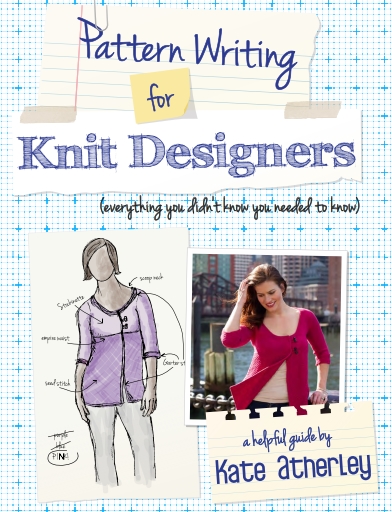 One of the reasons why I love this blog is that it allows me to retrace my steps. 2012 was the year of throwing out all the I ought to.. and 2013 was the year of 'what happens when I try to do the things I love'. 2014 offered an unexpected twist.
One of the reasons why I love this blog is that it allows me to retrace my steps. 2012 was the year of throwing out all the I ought to.. and 2013 was the year of 'what happens when I try to do the things I love'. 2014 offered an unexpected twist.
I started the year injuring my knee. As painful as it was, the injury also gave me some downtime to reflect upon my life and my work/life balance. Later in the year I was offered an opportunity to move into a new role with the yarn company I was working for .. and I decided to turn it down. Instead I became a fully self-employed knitting designer, writer and teacher. It was a very big, scary decision but I am yet to regret it.

From Brighton to Belfast, I travelled a lot this year. Unwind Brighton coincided with my new career path and it remains an undisputed highlight of my year. I loved Brighton itself, I loved teaching my classes, and I especially loved meeting knitters from all over the world. I have so many memories from Unwind: the teachers' dinner where I looked around thinking holy moly, this is like the knitting equivalent of a Nobel Prize dinner party, teaching in a Grade II-listed Georgian house, going on an impromptu photo safari of Brighton with Bristol, winning the Pompom Party pub quiz (I am still proud of my nano-second response of entrelac to an anagram question), teaching crochet to someone with the best sense of colour I can ever recall meeting, giggling hysterically over Sunday lunch with Joanne, and watching the Football World Cup finale in a craft beer pub filled with friends both new and old. And all while I was knitting a very woolly cardigan in the sweltering heat.

Design-wise, it was another bumper year, although most of the design 'action' took place after I turned self-employed.
+ I had patterns in two book releases this year: the Picycle Shawl in Bespoke and also The Juniper Hat and the Pinecones Shawl in The Knit Generation. The latter book was curated by Sarah Hatton and is just incredibly beautiful.
+ I had several patterns in knitting magazines this year. The Proserpine Shawl, the Mirja Hat & Gloves set, the Wharram Cowl, the Scollay cardigan, the Dala Love hat & boot toppers, and the Koselig vest all appeared in Knit Now while the Stina Crochet Collar popped up in Crochet Now. I also had the Vintage Moments set appear in Let's Knit.

+ Even more excitement as I collaborated with my good friend, Susan Crawford, on a design for her Knits in a Cold Climate collection, Noblesse Oblige. I also released the freebie Seaforth Hat as an exclusive download from LoveKnitting.
+ And probably the most exciting thing was finally finishing the Doggerland collection with Vedbaek, Ertebolle, and Storegga. I received so many messages and mails about Doggerland and I continue to be floored.
17 designs in one year. Last year I said I wanted to try my hand at garments and socks. I managed to publish two garments (Scollay and Koselig) and I have a sock club launching in January. I nearly made the deadline! I also had two magazine front covers which was equally bewildering and exciting.
I also managed to find time to write (including two articles for Knit Now about the Arts & Crafts Movement and Nordic knitting), teach, tech-edit, copy-edit and do some mentoring. Hardly any translation jobs in 2014! I went wholesale with my patterns which is a new adventure.
Yes, 2014 was a year of the unexpected twist and I think I'll look back at it as a transitional period in years to come. I have no idea what 2015 will bring (my 2013 prediction was "So. 2014? It will look quite a bit like 2013, I imagine."), but I think it'll be another year of transitions and changes. We'll see.
Finally, some of my personal favourites from 2014.
1913: The Year Before the Storm by Florian Illes was my favourite read of 2014. I love my early 20th century arts and culture and 1913 was a really great take on cultural maelstroms and intermissions. It was very, very much up my street. Stuart Murdoch's Glasgow-set pop musical God Help the Girl was always destined to be my favourite film of the year: it is filmed in a five-minute radius from where I live, I love Murdoch's band Belle & Sebastian, friends appear as extras and I freaking love musicals. Pure catnip, I tell you. Under the Skin was amazing too. The novel by Michel Faber is one of my favourites and I was relieved to see the film had not lost its otherworldliness. My favourite singer-songwriter, Neil Finn, visited Glasgow in April. I've seen him play live on mumble, mumble occasions, but this year's concert was really quite special. Here's some footage from the encore (not featured: me bawling somewhere in the crowd).
And 2014 was the year that Dave & I went to Arran for the day. And what a good, good day that was.



 One of the reasons why I love this blog is that it allows me to retrace my steps. 2012 was the year of throwing out all the I ought to.. and 2013 was the year of 'what happens when I try to do the things I love'. 2014 offered an unexpected twist.
One of the reasons why I love this blog is that it allows me to retrace my steps. 2012 was the year of throwing out all the I ought to.. and 2013 was the year of 'what happens when I try to do the things I love'. 2014 offered an unexpected twist.



 I get a lot of emails. Some deal with my own work, but a surprising amount of messages comes from people wanting to write patterns. Maybe my epic Twitter rants about poorly written patterns are to blame; maybe it is because when I teach I go on about things like gauge and chart symbols. Who knows?
What do you do if you didn't fluke a background in technical writing? Up to now you had to rely upon your knowledge of others' pattern writing skills and try to imitate their way of writing instructions. I understand why people do this, but it does not allow for reflection upon your own style and you may fall into adopting other people's bad habits without realising there are other options. Or you asked people like me who does have a background in technical writing (and who is horrifically busy) or you ask in Ravelry fora with somewhat mixed results.
I get a lot of emails. Some deal with my own work, but a surprising amount of messages comes from people wanting to write patterns. Maybe my epic Twitter rants about poorly written patterns are to blame; maybe it is because when I teach I go on about things like gauge and chart symbols. Who knows?
What do you do if you didn't fluke a background in technical writing? Up to now you had to rely upon your knowledge of others' pattern writing skills and try to imitate their way of writing instructions. I understand why people do this, but it does not allow for reflection upon your own style and you may fall into adopting other people's bad habits without realising there are other options. Or you asked people like me who does have a background in technical writing (and who is horrifically busy) or you ask in Ravelry fora with somewhat mixed results.

 Quite often I get asked which are the best needles out there. It's never a straightforward answer because different types of needles do different kinds of jobs. Some knitting needles are versatile workhorses, whilst others excel at taming temperamental yarns. I'm a big believer in keeping my toolbox well-stocked, but I cannot always keep up with what's on the market. So, when the lovely folks at KnitPro asked if I wanted to test-drive any of their needles, I asked if I could trial three of their more recent types of needles: the Karbonz, the Symphonie Cubics, and the Nova Cubics.
Quite often I get asked which are the best needles out there. It's never a straightforward answer because different types of needles do different kinds of jobs. Some knitting needles are versatile workhorses, whilst others excel at taming temperamental yarns. I'm a big believer in keeping my toolbox well-stocked, but I cannot always keep up with what's on the market. So, when the lovely folks at KnitPro asked if I wanted to test-drive any of their needles, I asked if I could trial three of their more recent types of needles: the Karbonz, the Symphonie Cubics, and the Nova Cubics.




 In recent years the UK has seen the rise of anti-immigration rhetoric. From British Jobs For British People slogans to blaming foreigners for a National Health System struggling to cope with budget cuts. Britain even has its own anti-immigration party now which enjoys disproportional media coverage. I have a strong feeling of deja-vu as sentiments I recognise from Denmark have spread to the UK. Encouraged by certain corners of UK media, it has become more and more acceptable to say things that are overtly racist. Being one of those pesky EU immigrants blamed for everything from how sandwiches are made to pot holes in the roads, it is rather disconcerting.
In recent years the UK has seen the rise of anti-immigration rhetoric. From British Jobs For British People slogans to blaming foreigners for a National Health System struggling to cope with budget cuts. Britain even has its own anti-immigration party now which enjoys disproportional media coverage. I have a strong feeling of deja-vu as sentiments I recognise from Denmark have spread to the UK. Encouraged by certain corners of UK media, it has become more and more acceptable to say things that are overtly racist. Being one of those pesky EU immigrants blamed for everything from how sandwiches are made to pot holes in the roads, it is rather disconcerting.
